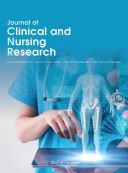Abstract
The rejected specimens from the Emergency Department of the Center of Clinical Laboratory from January 1, 2022 to January 1, 2023 were analyzed to reduce the specimen rejection rates and to improve the quality of inspection. The results showed that there were 1488 samples of rejected specimens and the non-conforming rate was 0.58%. The departments involved were mainly the Emergency Department, the Hematology Department, the Cardiology Department, the Intensive Care Department, and the Brain Surgery Department. Among the reasons for rejection, blood hemolysis accounted for 43.15%, blood coagulation accounted for 26.61%, and the rate of insufficient specimens was 17.14%. Among them, the sample rejection rate for arterial blood gas analysis was the highest, which accounted for 1.74%; followed by specimens for coagulation test, which was 1.18%. These results indicate the main reason for producing rejected specimens is mainly due to not following the standard operating procedure. Specimen rejection can largely be avoided if the standards for specimen collection are strictly followed.
References
Astion ML, Shojania KG, Hamill TR, et al., 2003, Classifying Laboratory Incident Reports to Identify Problems that Jeopardize Patient Safety. Am J Clin Pathol, 120(1): 18–26.
Chen Z, 2016, Analysis of Common Causes and Quality Control of Unqualified Specimens in Biochemical Tests. Clinical Medicine, 29(11): 237.
Cong Y, Zhang H, 2008, An Important Factor in the Pre-Analysis Quality Control of Hematology Tests-Specimen Collection and Control. Chinese Journal of Laboratory Medicine, 21(1): 52.
Wang Q, Zheng L, Zeng F, 2011, Strengthen Laboratory and Clinical Communication, Establish a Comprehensive Quality Management System. Chinese Journal of Laboratory Medicine, 27(7): 67–69.
Wang S, Wang Q, Li R, 2005, Medical Examination Specimens and Quality Control. Journal of Hebei Staff Medical College, 22(1): 21–23.
Wang B, Sun L, Zhou J, et al., 2012, Analysis of Unqualified Specimens from 2007 to 2010. Chinese Journal of Laboratory Medicine, 35(4): 305–308.
Zhang D, Li J, Zhao Q, et al., 2009, Clinical Experience Manual, Chemical Industry Press, Beijing .
Lu J, Wang W, Du M, et al., 2015, Cause Analysis and Countermeasures of 11024 Unqualified Blood Specimens. International Journal of Laboratory Medicine, 36(22): 3248–3252.
Wang Y, Ding Z, Yao F, et al., 2017, Cause Analysis and Countermeasures of Unqualified Specimens Before Inspection. International Journal of Laboratory Medicine, 38(16): 2324–2325.
Cheng H, Li J, Wei H, et al., 2010, Preanalytical Influencing Factors and Standardization of Coagulation Test. International Journal of Laboratory Medicine, 31(3): 298.
Ma L, Ma X, Yang L, 2015, Cause Analysis and Countermeasures for Unqualified Blood Coagulation Test Specimens of Tumor Patients. International Journal of Laboratory Medicine, 36(18): 2694–2696.
Tang W, Kong X, Xu Y, 2014, Cause Analysis of Unqualified Samples in Clinical Blood Test. Chinese Medicine Guide, 12(24): 132–133.
